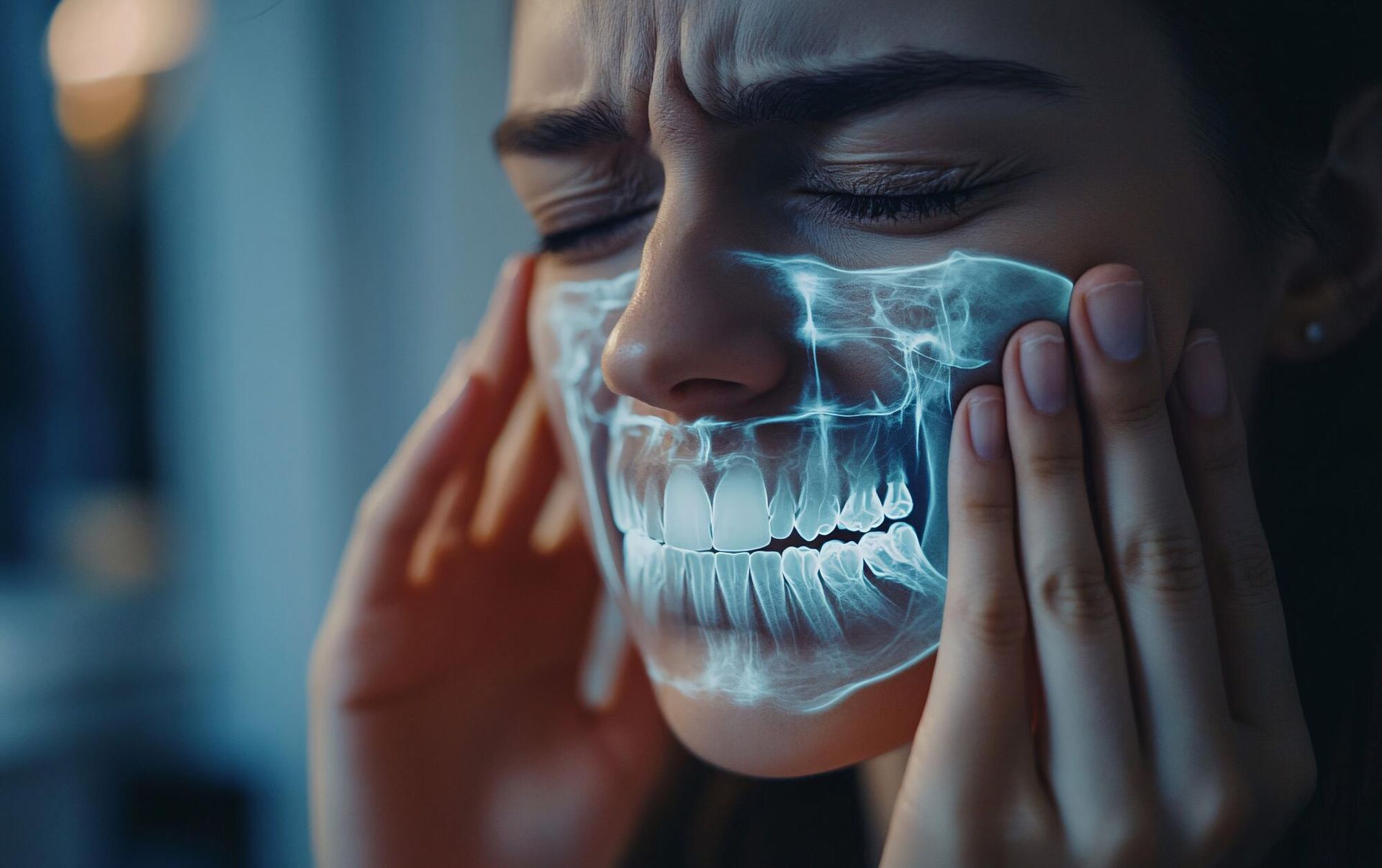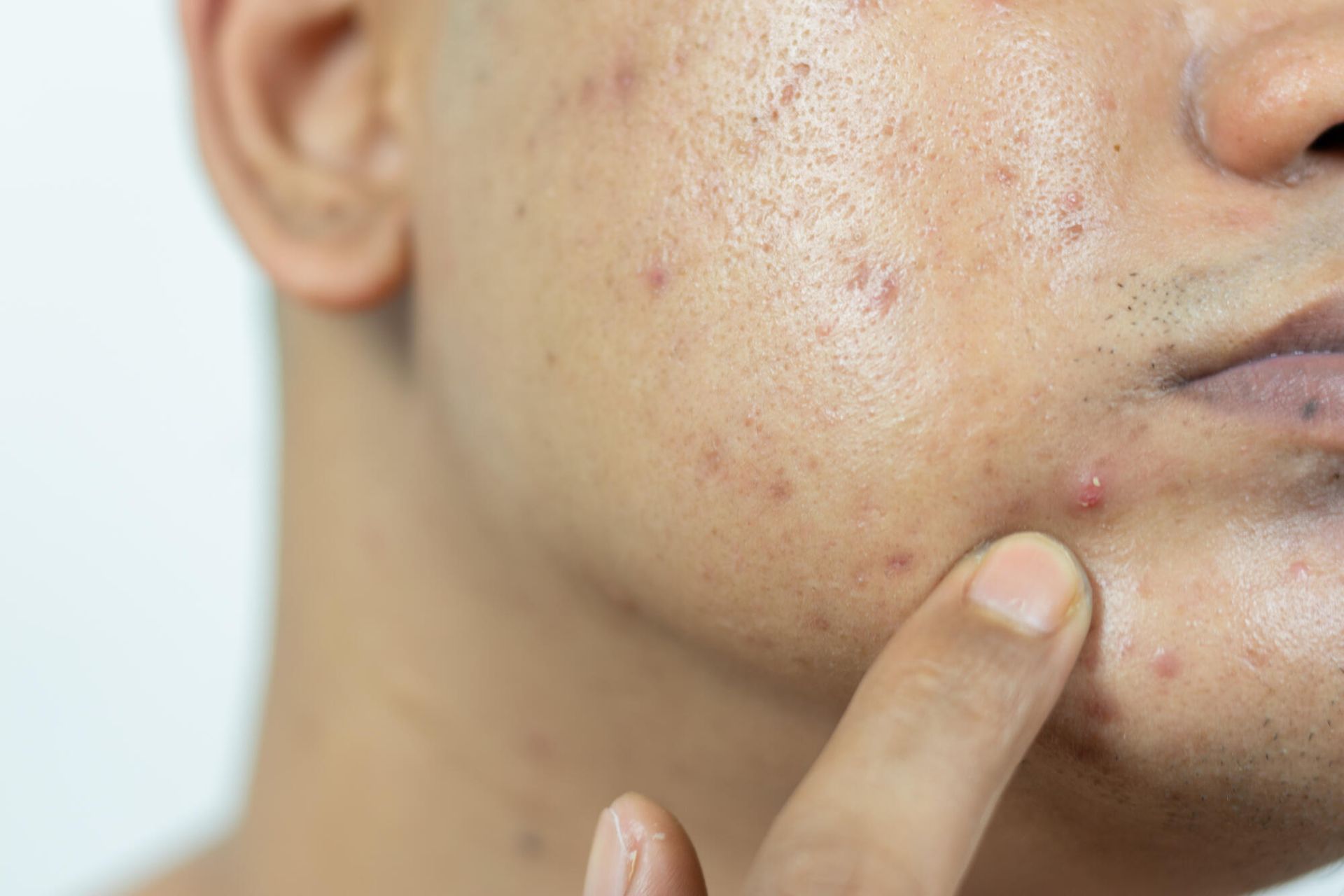The Frustration of a Locked Jaw: A Key Sign of TMD You Shouldn't Ignore
Roughly 4.8 percent of U.S. adults (over 11 million people) experience jaw-region pain related to TMD, according to the National Academies of Sciences, Engineering, and Medicine. You might feel it suddenly, your jaw stiffens, will not open fully, or aches when chewing. That locked jaw may seem minor, but it could point to a deeper issue: temporomandibular disorders.
Left unaddressed, those small moments of tightness can build into chronic pain. However, there is good news: help exists, and the signs are easier to spot than you think.
By understanding what is happening, you can take small steps that bring lasting relief. Learn what causes the lock, how to ease the tension, and which dental care solutions work. If your jaw feels like it is holding back your day, read on; we are unlocking what matters.
Recognizing Early Signs
TMD rarely shows up overnight. Instead, it creeps in with subtle shifts you might overlook.
Your jaw may feel a little tight one day, sore the next, then suddenly refuse to open wide. That slow build is often how a locked jaw begins.
You may think it is stress, a bad sleep position, or even a sinus issue. However, when jaw tension starts to recur, it is time to take a closer look. Clicking or popping noises are common.
You might feel pain that wraps around your ears or shoots toward your temples. Sometimes the jaw shifts or drifts when opening, as if it is caught off track.
Here are some early TMD symptoms worth noting:
- Jaw stiffness or tension
- Clicking or popping sounds
- Soreness when chewing
- Pain near the ears
- Limited jaw movement
- Facial muscle fatigue
- Uneven bite sensation
These signs are not random; they point to pressure building where it should not. If ignored, symptoms can intensify, turning an annoyance into daily pain.
Early discomfort is your jaw's way of calling for help; listen before it starts shouting. You do not need to wait for a full lock to take action. Catching it now means simpler solutions and better outcomes ahead.
What Causes the Lock?
Your jaw is not fragile, but it can misfire when too much strain builds up. A locked jaw often starts with tension in the temporomandibular joint or the muscles around it. That tension can arise from things you do not even think about, such as daily habits or stress reactions.
Grinding your teeth at night is one of the biggest culprits of TMJ. So is clenching your jaw while concentrating.
Injuries from falls, dental misalignment, or even arthritis can also play a role. Anything that disrupts the balance between your jaw, muscles, and joints can eventually cause it to become jammed or frozen.
Common causes of jaw locking include:
- Teeth grinding or clenching
- Past injury or trauma
- Arthritis in the joint
- Poor bite alignment
- Chronic stress habits
- Jaw overuse or chewing
Muscles tighten. Joints near the ear are inflamed. Motion becomes limited.
When your jaw locks, it is a clear signal that something is no longer working in sync. You might not feel it coming, but once it hits, it can stop you mid-meal, mid-sentence, or mid-smile.
How TMD Symptoms Affect Daily Life
A locked jaw does more than cause pain; it changes the way you live each day—activities you took for granted become frustrating hurdles. Chewing meals can be uncomfortable or even painful.
Talking with friends or family can become uncomfortable when your jaw feels stuck or sore. You may start avoiding certain foods or holding back from smiling freely. This constant discomfort creates a barrier between you and your usual routines.
Jaw pain rarely stays isolated. It often spreads to cause headaches, neck stiffness, or earaches. These symptoms can make sleep restless and leave you feeling tired during the day.
When pain lingers, it can affect your mood and increase stress. That stress then tightens your jaw muscles, exacerbating the pain in a cycle that is difficult to break.
Living with a locked jaw can feel like carrying a secret burden that wears you down. Even if others do not see it, the impact is real. Recognizing how these symptoms affect your life is the first step toward finding relief and regaining control.
Simple Oral Health Tips for Jaw Pain Relief
Small daily changes can bring absolute comfort and reduce the chance of your jaw locking up again. Gentle jaw stretches help keep muscles loose and flexible.
Applying warm compresses relaxes tense muscles and eases soreness. Avoiding foods that are hard to chew or sticky gives your jaw time to heal and rest.
Stress is a significant factor in the development of jaw pain. Taking time for relaxation techniques such as deep breathing or meditation helps release muscle tension.
Becoming aware of your jaw throughout the day is helpful, too. If you notice that you are clenching or grinding your teeth, consciously relax your jaw and face to stop the habit.
Oral health tips that focus on gentle care and relaxation can make a significant difference in easing pain. These simple steps support more advanced dental care solutions and help reduce TMD symptoms. Maintaining your jaw's health every day means fewer episodes of a locked jaw and a more comfortable life.
Dental Care Solutions That Help
When everyday habits are insufficient to alleviate your jaw pain, professional dental care solutions become essential. A complete dental exam can pinpoint what is behind your locked jaw.
From there, your dentist can suggest treatments that offer lasting relief. One of the most common solutions is a custom night guard that protects your teeth during sleep and reduces pressure on your jaw.
Physical therapy is another excellent option. Jaw exercises taught by a therapist help restore motion, relax tense muscles, and prevent further strain.
If inflammation or soreness becomes severe, your provider may recommend medication to ease swelling or block pain signals. In some cases, correcting bite alignment may be necessary through dental work or orthodontic treatment.
Some standard treatment options include:
- Custom night guards
- Physical therapy routines
- Anti-inflammatory medication
- Bite adjustment techniques
- Restorative dental work
- Jaw muscle retraining
Finding the right dental care solution breaks the cycle of pain and restores your jaw's natural balance. The earlier you seek help, the smoother your recovery will be. Do not wait for things to lock up completely; your jaw deserves attention before discomfort takes over.
When to See a Doctor
Knowing when to involve a medical professional can protect your jaw and prevent long-term damage. If your pain persists beyond a few days or if you are unable to open or close your mouth fully, it is time to consult a doctor or dentist. Locking that occurs frequently or pain that intensifies should not be dismissed.
Medical evaluations include physical exams and possibly imaging tests, such as X-rays or MRI scans, to understand what is happening beneath the surface. These tests rule out other causes, such as arthritis or infections, ensuring the correct diagnosis leads to the appropriate care. Waiting too long can increase the risk of permanent stiffness or joint damage.
Watch for warning signs such as:
- Jaw locking often
- Ongoing facial pain
- Trouble opening fully
- Severe or sharp aches
- Clicking with discomfort
- Pain that spreads
Early medical intervention prevents minor jaw issues from becoming chronic and debilitating. A consultation brings clarity, and starting treatment early gives you the best chance of achieving lasting relief.
Managing Stress to Ease TMD Symptoms
Stress not only affects your mood; it also tightens your jaw without you even noticing. Many people clench their teeth while driving, working, or scrolling through a screen.
That constant pressure puts strain on the jaw joint and surrounding muscles. Over time, it can lead to a locked jaw or worsen existing symptoms.
Learning how to spot your stress habits is a decisive first step. You might catch yourself holding tension in your face, chewing pens, or grinding your teeth when focused.
Interrupting those patterns can make a real difference. Adding in daily stress relievers can help relax your jaw and lower your risk of flare-ups.
Helpful ways to manage stress:
- Deep breathing breaks
- Gentle jaw stretches
- Warm compresses nightly
- Calming walks outdoors
- Guided relaxation apps
- Short mental pauses
Jaw tension often fades when your body learns how to relax again. This may also include a reduction in tinnitus.
Habits That Can Make It Worse
Some everyday actions may seem harmless, but they can quietly contribute to your jaw problems. Chewing gum for long periods, biting your nails, or leaning your chin on your hand can all increase pressure on the jaw. Even favoring one side while chewing can lead to imbalance and soreness.
Sleep posture matters too. Lying face-down or with pressure on the side of your jaw can aggravate TMD symptoms. Observing how you hold your phone or sit at your desk can also be helpful. The more strain you put on your head, neck, and jaw without realizing it, the more likely your jaw is to resist and lock.
Understanding Your Locked Jaw
A locked jaw is a clear sign that your temporomandibular joint needs attention and care. Recognizing this symptom early helps you take action before pain and stiffness become permanent.
Unlock a life where every smile feels natural and every word flows free. At Dental Care Burke, expert hands combine advanced technology with compassionate care to alleviate your jaw pain and restore your comfort. Take the first step toward lasting relief; your journey to a freer jaw begins here.












